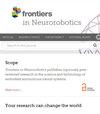针对不可预测和未指定任务的高效抓取共享控制架构
IF 2.6
4区 计算机科学
Q3 COMPUTER SCIENCE, ARTIFICIAL INTELLIGENCE
引用次数: 0
摘要
在复杂和不可预测的场景中进行机器人控制面临着适应性、鲁棒性和人机交互等挑战。这些场景通常要求机器人在高度不确定的非结构化环境中执行涉及未知物体的任务。传统的控制方法,如自动控制,由于其适应性有限且依赖于先验知识,可能并不适用。人在环方法面临反馈不足、噪声和延迟导致故障率增加以及操作员缺乏沉浸感等问题,无法实现人类水平的性能。本研究提出了一种共享控制框架,通过结合远程操作和自动控制方法的优势,实现效率和适应性之间的权衡。所提出的方法结合了人工控制方法和自动控制方法的优点,实现了性能和适应性之间的平衡。我们建立了一个线性模型来比较三种控制方法,并分析了位置噪声和通信延迟对性能的影响。共享控制系统在现实世界中的实施证明了它在物体抓取和操纵任务中的有效性。结果表明,共享控制可以显著提高抓取效率,同时在实际机器人应用中保持任务执行的适应性。本文章由计算机程序翻译,如有差异,请以英文原文为准。
An efficient grasping shared control architecture for unpredictable and unspecified tasks
Robot control in complex and unpredictable scenarios presents challenges such as adaptability, robustness, and human-robot interaction. These scenarios often require robots to perform tasks that involve unknown objects in unstructured environments with high levels of uncertainty. Traditional control methods, such as automatic control, may not be suitable due to their limited adaptability and reliance on prior knowledge. Human-in-the-loop method faces issues such as insufficient feedback, increased failure rates due to noise and delays, and lack of operator immersion, preventing the achievement of human-level performance. This study proposed a shared control framework to achieve a trade-off between efficiency and adaptability by combing the advantages of both teleoperation and automatic control method. The proposed approach combines the advantages of both human and automatic control methods to achieve a balance between performance and adaptability. We developed a linear model to compare three control methods and analyzed the impact of position noise and communication delays on performance. The real-world implementation of the shared control system demonstrates its effectiveness in object grasping and manipulation tasks. The results suggest that shared control can significantly improve grasping efficiency while maintaining adaptability in task execution for practical robotics applications.
求助全文
通过发布文献求助,成功后即可免费获取论文全文。
去求助
来源期刊

Frontiers in Neurorobotics
COMPUTER SCIENCE, ARTIFICIAL INTELLIGENCER-ROBOTICS
CiteScore
5.20
自引率
6.50%
发文量
250
审稿时长
14 weeks
期刊介绍:
Frontiers in Neurorobotics publishes rigorously peer-reviewed research in the science and technology of embodied autonomous neural systems. Specialty Chief Editors Alois C. Knoll and Florian Röhrbein at the Technische Universität München are supported by an outstanding Editorial Board of international experts. This multidisciplinary open-access journal is at the forefront of disseminating and communicating scientific knowledge and impactful discoveries to researchers, academics and the public worldwide.
Neural systems include brain-inspired algorithms (e.g. connectionist networks), computational models of biological neural networks (e.g. artificial spiking neural nets, large-scale simulations of neural microcircuits) and actual biological systems (e.g. in vivo and in vitro neural nets). The focus of the journal is the embodiment of such neural systems in artificial software and hardware devices, machines, robots or any other form of physical actuation. This also includes prosthetic devices, brain machine interfaces, wearable systems, micro-machines, furniture, home appliances, as well as systems for managing micro and macro infrastructures. Frontiers in Neurorobotics also aims to publish radically new tools and methods to study plasticity and development of autonomous self-learning systems that are capable of acquiring knowledge in an open-ended manner. Models complemented with experimental studies revealing self-organizing principles of embodied neural systems are welcome. Our journal also publishes on the micro and macro engineering and mechatronics of robotic devices driven by neural systems, as well as studies on the impact that such systems will have on our daily life.
 求助内容:
求助内容: 应助结果提醒方式:
应助结果提醒方式:


